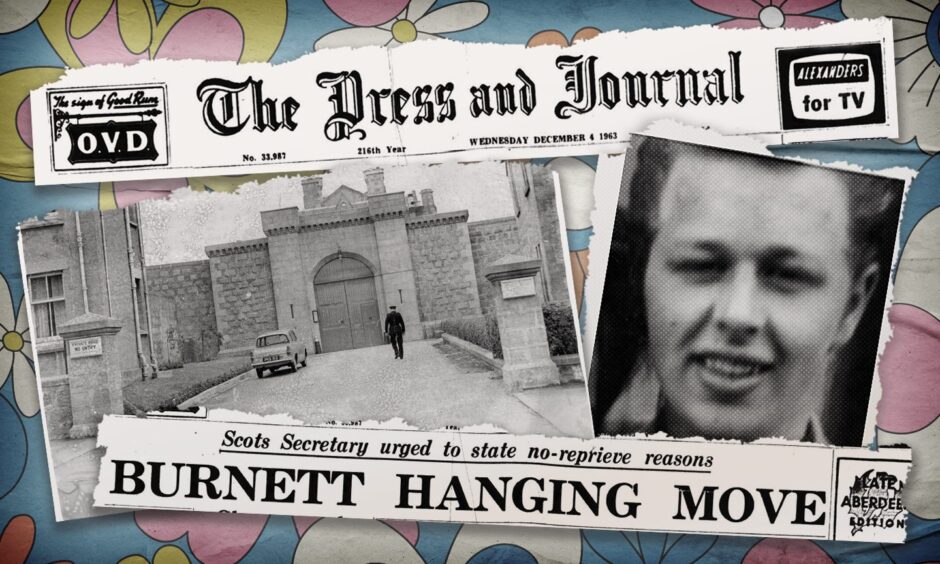
The controversial hanging of Henry John Burnett in Aberdeen a few months earlier continued to make the headlines on this day in 1963.
Henry Burnett was the last man hanged in Scotland, in a highly controversial decision.
He was sentenced to death at the High Court in Aberdeen on July 25 1963 for murdering seaman Thomas Guyan in an impulsive crime of passion.
He was hanged only a few weeks later on August 15, amid public protests and outrage.
It wasn’t that people said he was innocent, they knew he wasn’t.
But the fact that Burnett’s extreme history of mental illness wasn’t taken into account appalled public opinion.
At trial, the defence lodged a special plea of not guilty on the grounds of insanity.
The court heard compelling evidence from three psychiatrists declaring Burnett insane at the time of the crime – and his trial.
As well as suicide attempts, he’d previously spent time in a mental hospital.
This didn’t wash with the court however, presided over by Lord Wheatley, and Burnett was shown no mercy.
His was a swift route to the gallows thereafter.
Almost four months later, the case dominated the P&J’s front page again.
Aberdeen Presbytery voted to press the Scottish Secretary Michael Noble, MP for Argyllshire, to say why he didn’t grant a reprieve to Burnett.
Behind the resolution was Rev G T H Reid of West Church of St Andrew, Aberdeen who make it clear that it had nothing to do with the rights and wrongs of capital punishment, and Burnett’s guilt was not in question.
What was in question was his mental state, Mr Reid said, and after recounting Burnett’s history of mental abnormality, he claimed that the crime for which he was eventually hanged with committed with such ‘reckless irresponsibility’ that there was a question about his mental condition, the P&J reported.
“I believe that most of us present who read the account of the trial at the time took it for granted Burnett was not for hanging,” Mr Reid said. “When the hanging did take place, we were astonished.”
He singled out the P&J for its view on the morning of the execution which was that the Scottish Secretary could not expect to escape a challenge to explain the basis of his decision.
“Our public press was early so alive to the serious questions to which Burnett’s execution gives rise. I am ashamed that we have not been earlier alive to these questions.”
The views of two professors, one from Aberdeen University and one from Edinburgh University deploring the way the psychiatric evidence had been discounted, plus the P&J’s warning at the time had convinced the Presbytery that the hanging of a 20-year- old man ‘diagnosed as a psychopath’ should never have taken place, Mr Reid said.
“My motion does not assume that injustice has taken place. It is based simply on the contention that there are sufficient grounds of doubt as to justify us asking the Secretary of State to take the exceptional step of making known the reasons why he did not grant a reprieve.”
Other members of the Presbytery were uneasy about Mr Reid’s resolution.
Rev Murray Donaldson from Rosemount Church Aberdeen said it had been forced on them too quickly without giving time to compose their thoughts on it.
He added if the possibility of a reprieve had been there the Scottish Secretary would have granted it.
But Rev Anderson Nicol of West Church of St Nicholas countered by saying they were making a most reasonable request.
“The only man who could allay public fear and suspicion on the Burnett hanging and help to set the law once again on the pinnacle on which they all set it and to which they gave the most possible respect was the Scottish Secretary.”
In the event, the Presbytery’s request fell on deaf ears, and no reason was ever given as to why a reprieve was not granted.
Read the full story of Henry John Burnett’s last days here.
More from our On This Day series:
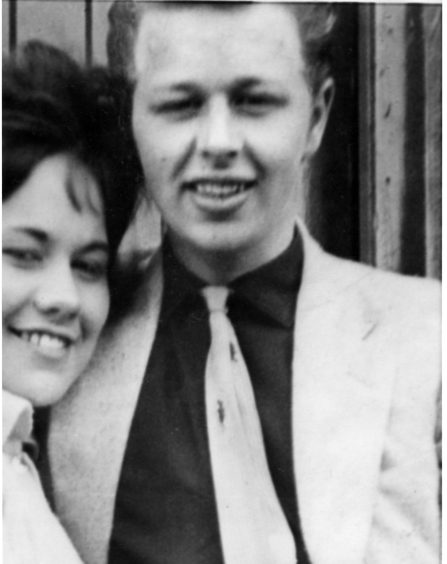
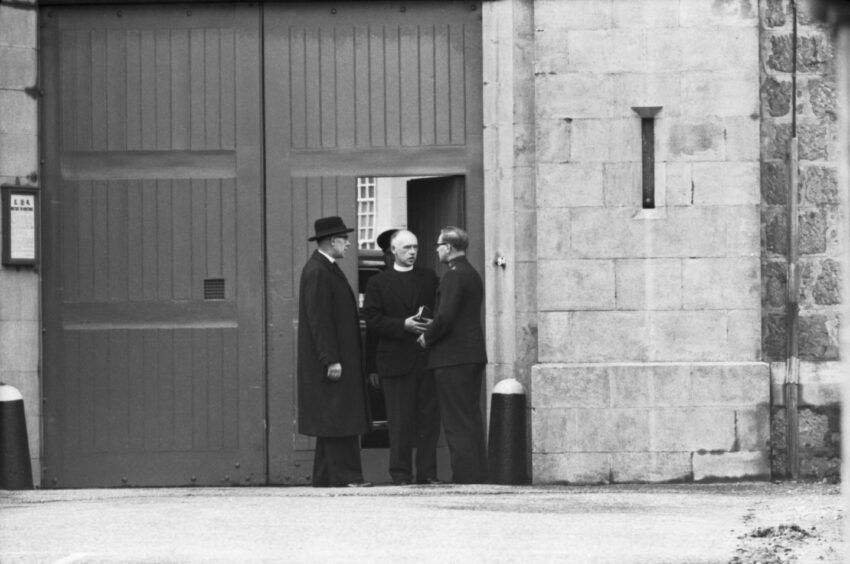
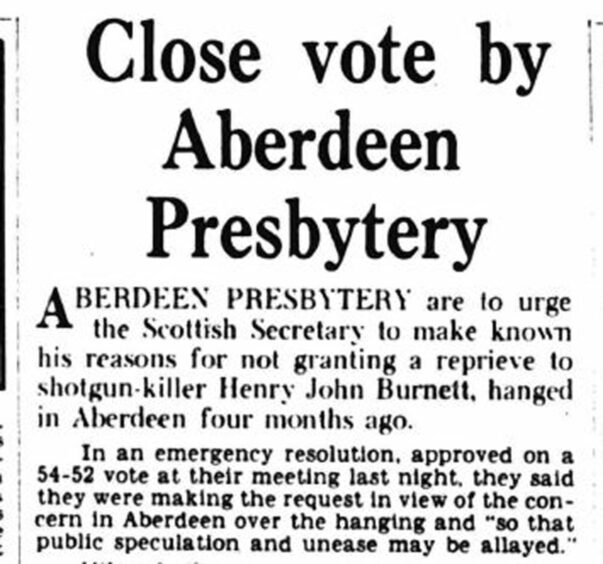
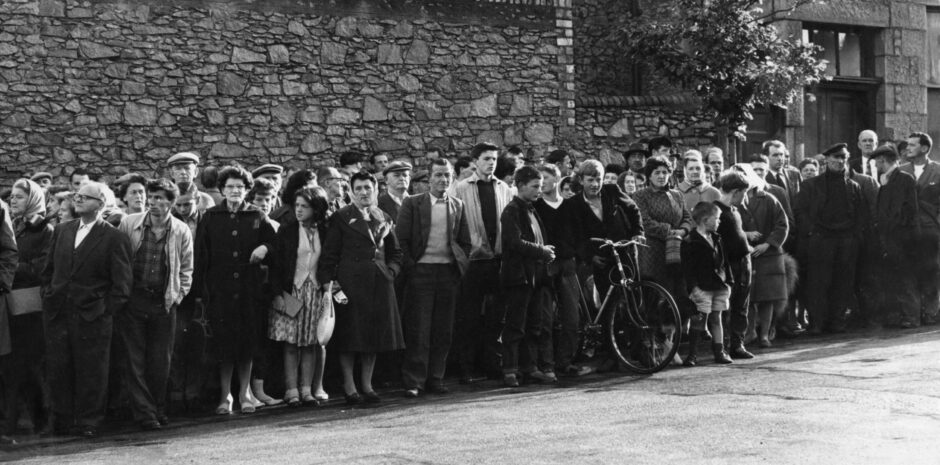
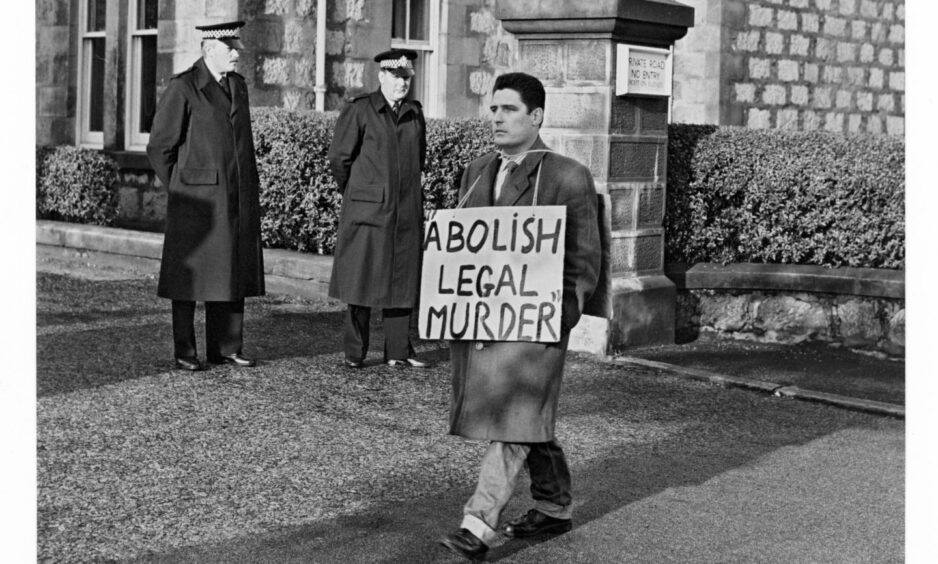


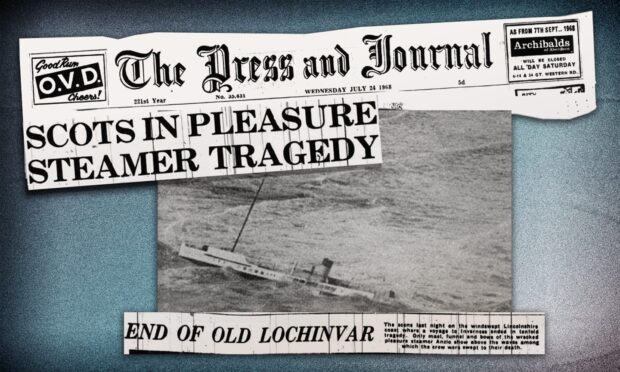
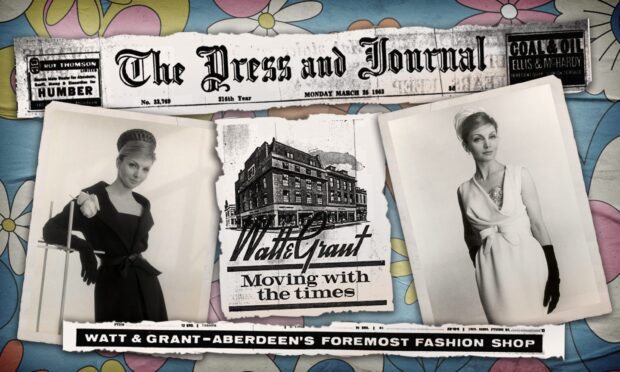
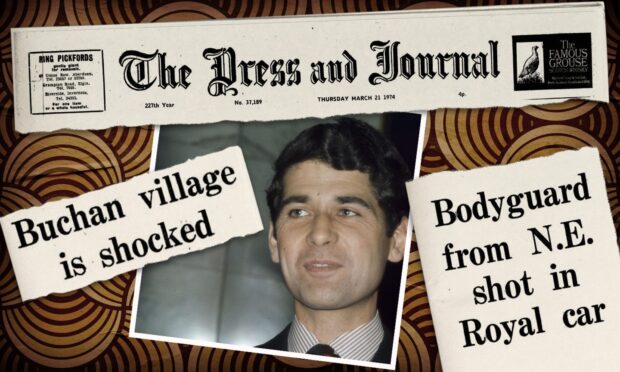
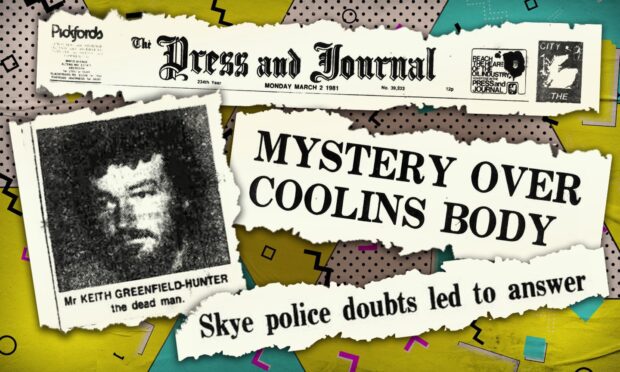
Conversation